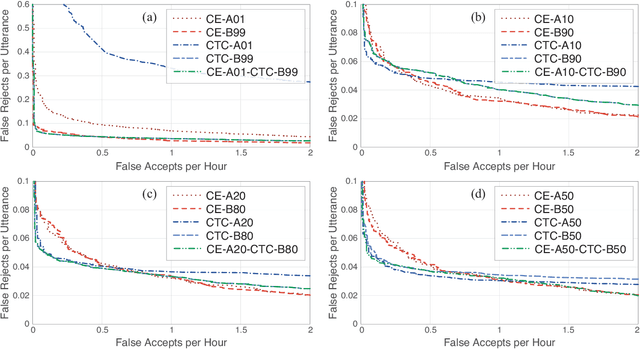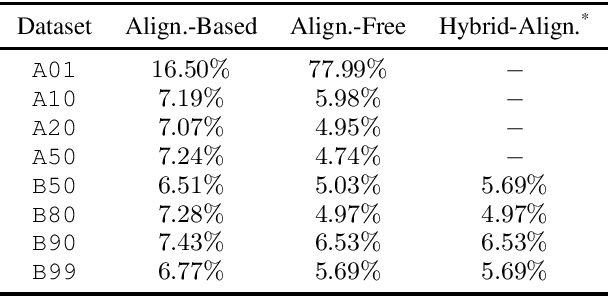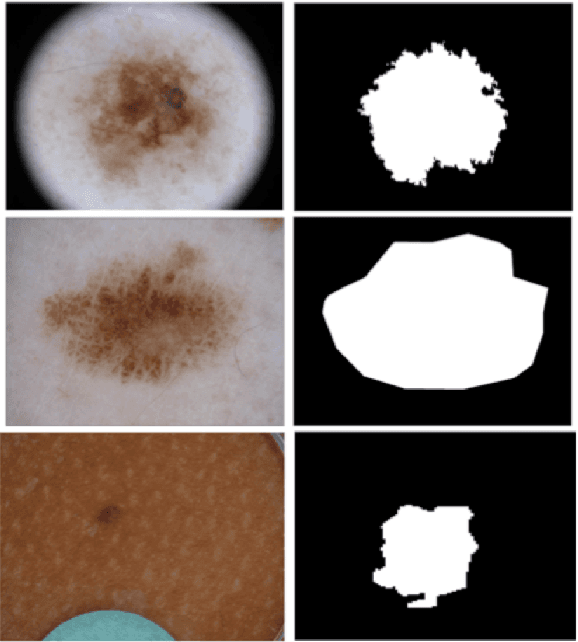Vinicius Ribeiro
Handling the Alignment for Wake Word Detection: A Comparison Between Alignment-Based, Alignment-Free and Hybrid Approaches
Feb 17, 2023



Abstract:Wake word detection exists in most intelligent homes and portable devices. It offers these devices the ability to "wake up" when summoned at a low cost of power and computing. This paper focuses on understanding alignment's role in developing a wake-word system that answers a generic phrase. We discuss three approaches. The first is alignment-based, where the model is trained with frame-wise cross-entropy. The second is alignment-free, where the model is trained with CTC. The third, proposed by us, is a hybrid solution in which the model is trained with a small set of aligned data and then tuned with a sizeable unaligned dataset. We compare the three approaches and evaluate the impact of the different aligned-to-unaligned ratios for hybrid training. Our results show that the alignment-free system performs better alignment-based for the target operating point, and with a small fraction of the data (20%), we can train a model that complies with our initial constraints.
Less is More: Sample Selection and Label Conditioning Improve Skin Lesion Segmentation
Apr 28, 2020



Abstract:Segmenting skin lesions images is relevant both for itself and for assisting in lesion classification, but suffers from the challenge in obtaining annotated data. In this work, we show that segmentation may improve with less data, by selecting the training samples with best inter-annotator agreement, and conditioning the ground-truth masks to remove excessive detail. We perform an exhaustive experimental design considering several sources of variation, including three different test sets, two different deep-learning architectures, and several replications, for a total of 540 experimental runs. We found that sample selection and detail removal may have impacts corresponding, respectively, to 12% and 16% of the one obtained by picking a better deep-learning model.
Handling Inter-Annotator Agreement for Automated Skin Lesion Segmentation
Jun 06, 2019



Abstract:In this work, we explore the issue of the inter-annotator agreement for training and evaluating automated segmentation of skin lesions. We explore what different degrees of agreement represent, and how they affect different use cases for segmentation. We also evaluate how conditioning the ground truths using different (but very simple) algorithms may help to enhance agreement and may be appropriate for some use cases. The segmentation of skin lesions is a cornerstone task for automated skin lesion analysis, useful both as an end-result to locate/detect the lesions and as an ancillary task for lesion classification. Lesion segmentation, however, is a very challenging task, due not only to the challenge of image segmentation itself but also to the difficulty in obtaining properly annotated data. Detecting accurately the borders of lesions is challenging even for trained humans, since, for many lesions, those borders are fuzzy and ill-defined. Using lesions and annotations from the ISIC Archive, we estimate inter-annotator agreement for skin-lesion segmentation and propose several simple procedures that may help to improve inter-annotator agreement if used to condition the ground truths.
 Add to Chrome
Add to Chrome Add to Firefox
Add to Firefox Add to Edge
Add to Edge